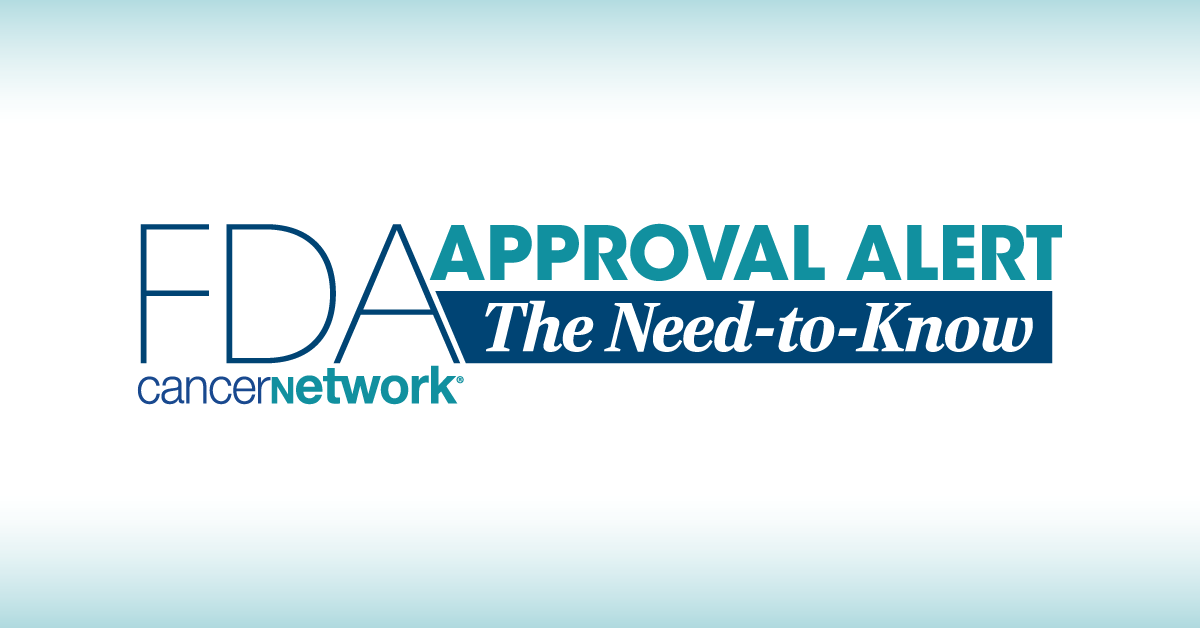FDA Approves Tovorafenib for Relapsed/Refractory Low-Grade Glioma
The FDA approval of the single-agent, oral pan-RAF inhibitor tovorafenib is based on efficacy results from the phase 2 FIREFLY-1 trial.
The FDA approval of the single-agent, oral pan-RAF inhibitor tovorafenib is based onefficacy results from the phase 2 FIREFLY-1 trial.

The FDA has granted accelerated approval to the single-agent, oral pan-RAF inhibitor tovorafenib (Ojemda) as a treatment regimen for patients 6 months or older with relapsed/refractory pediatric low-grade glioma harboring a BRAF fusion or rearrangement, according to a press release for the agency.1
The approval is based on the results from the phase 2 FIREFLY-1 trial (NCT04775485), which assessed tovorafenib in RAF-altered, recurrent, or progressive low-grade glioma and advanced solid tumors.2
As of the cutoff date of June 5, 2023, patients experienced an overall response rate (ORR) of 67%, with a complete response rate of 17%, a partial response rate of 49%, and a stable disease rate of 26%. Among 69 evaluable patients, there was a clinical benefit rate (CBR) of 93% as per Response Assessment for Neuro-Oncology High-Grade Glioma (RANO-HGG) criteria. The median duration of response (DOR) was 16.6 months (95% CI; 11.6- not estimable). For the 77 treatment patients, the median duration of response was 15.8 months, and 66% remained on treatment after cutoff.
This phase 2, open-label, multicenter study divided 137 patients into 3 arms. Arm 1 includedpatients with relapsed or progressive low-grade glioma; arm 2 was the expanded access arm of pediatric patients with low-grade glioma; and arm 3 included pediatric patients with advanced solid tumors.
Tovorafenib was administered at the recommended phase 2 dose of 420 mg/m2 once a week for each 28-day treatment cycle, for a total of 26 cycles. Patients are not to exceed 600 mg. Treatment was administered until disease progression or unacceptable toxicity.
Eligibility for enrollment on trial for patients 6 months to 25 years old included having relapsed or progressive low-grade glioma with known activating BRAF alteration, as well as locally advanced or metastatic solid tumors with an activated RAF fusion. Additionally, patients were required tohave received at least 1 prior line of systemic therapy with evidence of radiographic progression and at least 1 measurable lesion as per RANO or RECIST v1.1 guidelines.
The primary endpoints of the trialwere ORR, as defined by the proportion of patients with a confirmed response based on RANO-HGG and RECIST v 1.1 criteria, and assessing safety and tolerability. Secondary and exploratory endpoints included ORRby investigator, pharmacokinetics, and the effect of prior laboratory BRAF molecular profiling.
As per RAPNO-LGG, among 76 evaluable patients, there was a 51% ORR and an 82% CBR. A total of 37% of patients experienced a partial response; 14% experienced a minor response; and 30% experienced stable disease. At the time of data cutoff, the median DOR was 13.8 months (95% CI, 11.3, not estimable).
According to RANO-LGG guidelines conducted under an exploratory analysis, among the 76 evaluable patients, there was a 53% ORR and an 83% CBR. A total of 26% of patients experienced a partial response; 26% experienced a minor response; and 30% experienced stable disease. At the time of data cutoff, the median DOR was 14.4 months (95% CI, 11.0, not estimable).
Tovorafenib was generally well-tolerated among patients, with most adverse effects (AEs) being grade 1/2. The most common AEs were changes in hair color (76%), fatigue (44%), maculopapular rash (41%), dry skin (33%), and dermatitis acneiform (30%). The most reported treatment-related lab abnormalities were creatine phosphokinase elevation, lactate dehydrogenase elevation, anemia, hypophosphatemia, and aspartate aminotransferase elevation. These laboratory abnormalities rarely had clinical manifestations and did not require clinical intervention or change in study treatment.
Prior to approval, the FDA granted a priority review to a new drug application for the single-agent tovorafenib in October 2023.3
References
- FDA grants accelerated approval to tovorafenib for patient with relapsed or refractory BRAF-altered pediatric low-grade glioma. News release. FDA. April 23, 2024. Accessed April 23, 2024. https://shorturl.at/nHOPW
- Day One announces updated FIREFLY-1 data for tovorafenib and completion of rolling NDA submission to FDA for relapsed or progressive pediatric low-grade glioma (pLGG). News release. Day One Pharmaceuticals. September 11, 2023. Accessed January 31, 2024. http://tinyurl.com/37vws4y3
- Day One announces FDA acceptance of NDA and priority review for tovorafenib in relapsed or progressive pediatric low-grade glioma (pLGG). News release. Day One Biopharmaceuticals. October 30, 2023. Accessed October 31, 2023. https://shorturl.at/mOS13